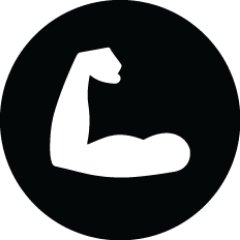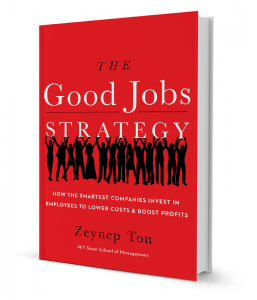
By Yolanda Lau
Balance implies equality. It implies a 50–50 split, and an unsteady teetering in the search for balance. It’s why work/life balance is so elusive and unachieveable, inducing guilt and anxiety, particularly for working moms. And it’s why I prefer the term work-life fit (or as others write it, “work+life fit”). The difference between fit and balance is subtle but important.
The truth is, work is a part of life. It’s all one and the same. You can’t balance work with life when work is a part of life.
When you stop trying to find “balance” and instead focus on what you can control to make your professional life and personal life “fit” together, you find new ways to pursue personal and career goals. Note that the root of this reframing, from focusing on the problem to focusing on the solution, works for almost any challenge. It broadens the horizons, allowing you to find non-obvious answers.
Work-life fit also implies that there’s no cookie cutter answer. It enables people to seek ways to create an individualized work-life fit, regardless of the traditional boundaries of time and place.
And whereas the search for work-life balance often feels like the domain of working moms and dads, work-life fit is about all of us. Parents, singles, married without kids, folks taking care of elderly parents or other family members who need assistance, millennials, baby boomers, Gen X, Gen Z, all of us. Work-life fit is the desire to pursue careers that don’t come at the expense of other factors in our life, regardless of demographic. It’s something we all deserve.
For some people, work-life fit means flexibility in when and how you work. Some examples of this are:
- Can you work from home a few days a week?
- Can you make up work you’ve missed on your own time, instead of using PTO every time you need to step out of the office?
- Can you step out of the office for errands, school plays, medical appointments, volunteer work, or for any reason?
- Can you time-shift your work day so that you are commuting at off peak hours?
- Has your employer implemented a 32 hour work week with Fridays off?
- Can you work from home when a family member needs attention (medical or otherwise), instead of using PTO?
But there are other subtle ways to help achieve work-life fit. For example, setting boundaries so that work doesn’t blur into personal life. A culture where vacation time is respected and encouraged, and “checking in” is discouraged. Or a culture where employees are encouraged to have interests outside of work. Or a team where colleagues can cover for you when you have to step outside of the office, or managers who understand and accommodate requests to flex your schedule.
Unfortunately, many (dare I say most?) employers aren’t there yet. Many corporations and start-ups still expect employees to be diligent robotic workers without cares or interests outside of the office. But it’s unrealistic. And times are changing.
That is why we started FlexTeam — to allow highly educated women to stay as engaged in their careers as they choose. We each found our own work-life fit by doing project-based consulting, and realized everyone deserved the same opportunity. And while we’re on that topic…
What is the opportunity that FlexTeam provides? FlexTeam provides clients with a scope of work with clear deliverables and pricing, after understanding clients’ needs. While defining the project with the client, we are identifying the best FlexTeam member(s) to do the work, so that we are able to get started on the project as soon as the client agrees to the work. Unlike a marketplace, the client does not select particular consultants, nor are FlexTeam members bidding on projects. FlexTeam’s matching algorithm select consultants for projects that align with their particular skills and past experiences. This allows FlexTeam members (who complete a rigorous onboarding process) to focus on challenging, interesting, and paid work.
Jumping ship from the traditional workforce to work for yourself (or become your own microentrepreneur) isn’t for everyone. But it’s a start. Let’s forget about the mythical work-life balance and aim for work-life fit. The world needs more options for people searching for work-life fit. Because we all deserve to find work-life fit.
Interested in the Future of Work? Join the Work of the Future #FutureOfWork Facebook Group.

Yolanda Lau is an experienced entrepreneurship consultant, advisor, and Forbes Contributor. She is also an educator, speaker, writer, and non-profit fundraiser.
Since 2010, she has been focused on preparing knowledge workers, educators, and students for the future of work.
Learn more about Yolanda here.

FlexTeam is a mission-based micro-consulting firm, co-founded by Yolanda Lau in 2015, that matches talented mid-career women with meaningful, challenging, temporally flexible, remote project-based work opportunities. FlexTeam’s clients are businesses of all sizes across all industries and sectors. FlexTeam’s most requested projects are competitor / market research, financial models, and investor decks. FlexTeam is also the team behind Liquid.



















